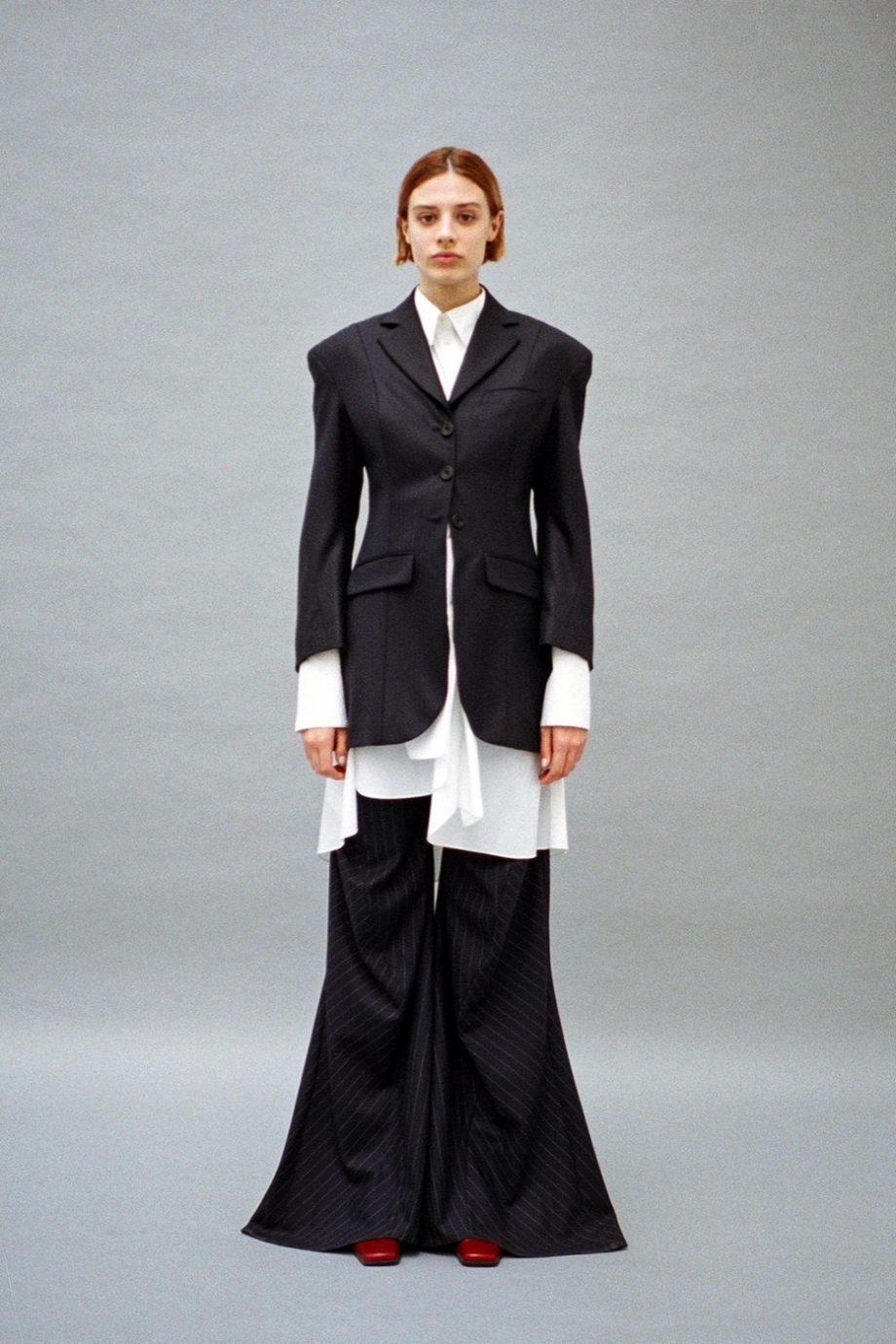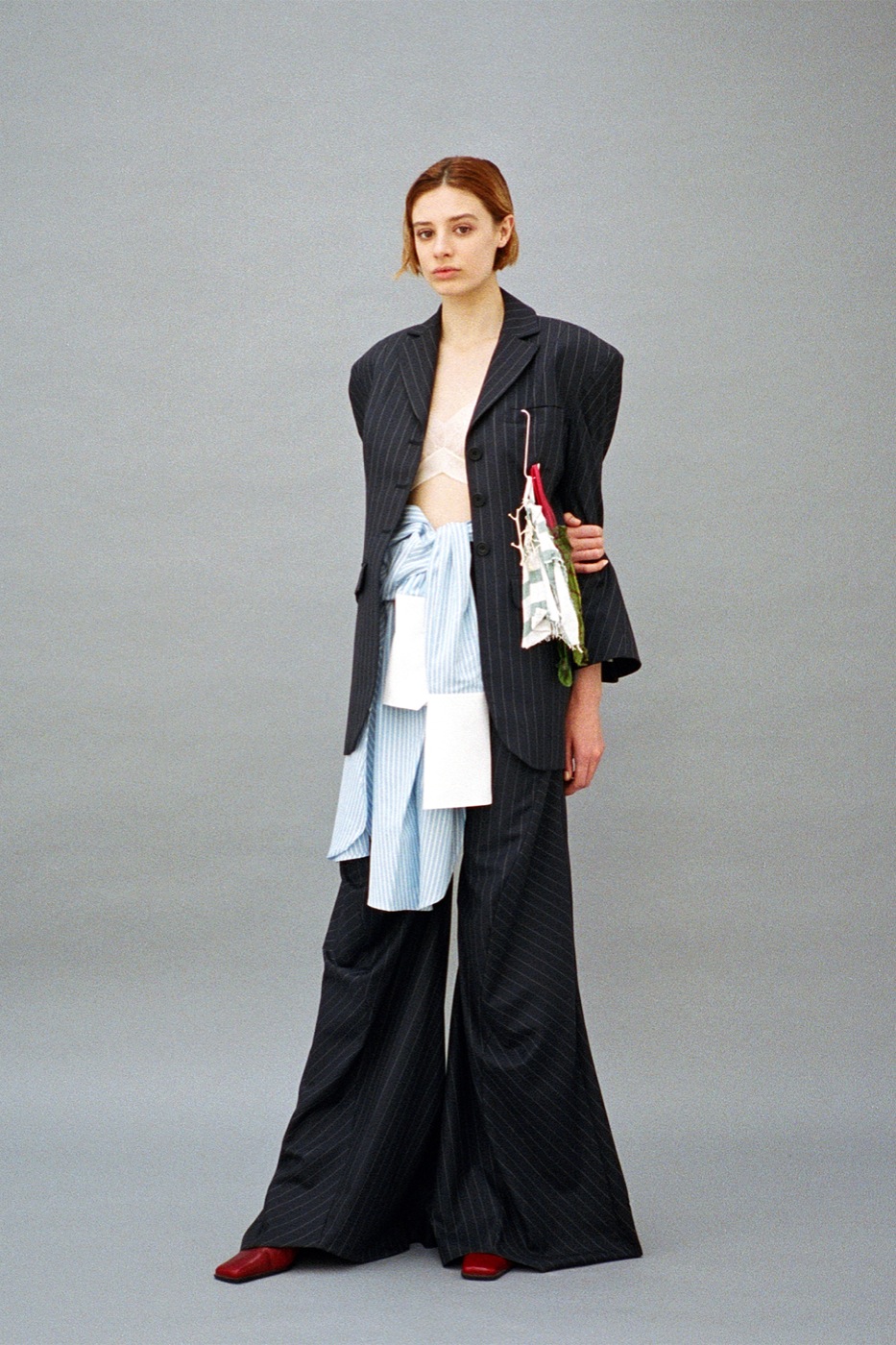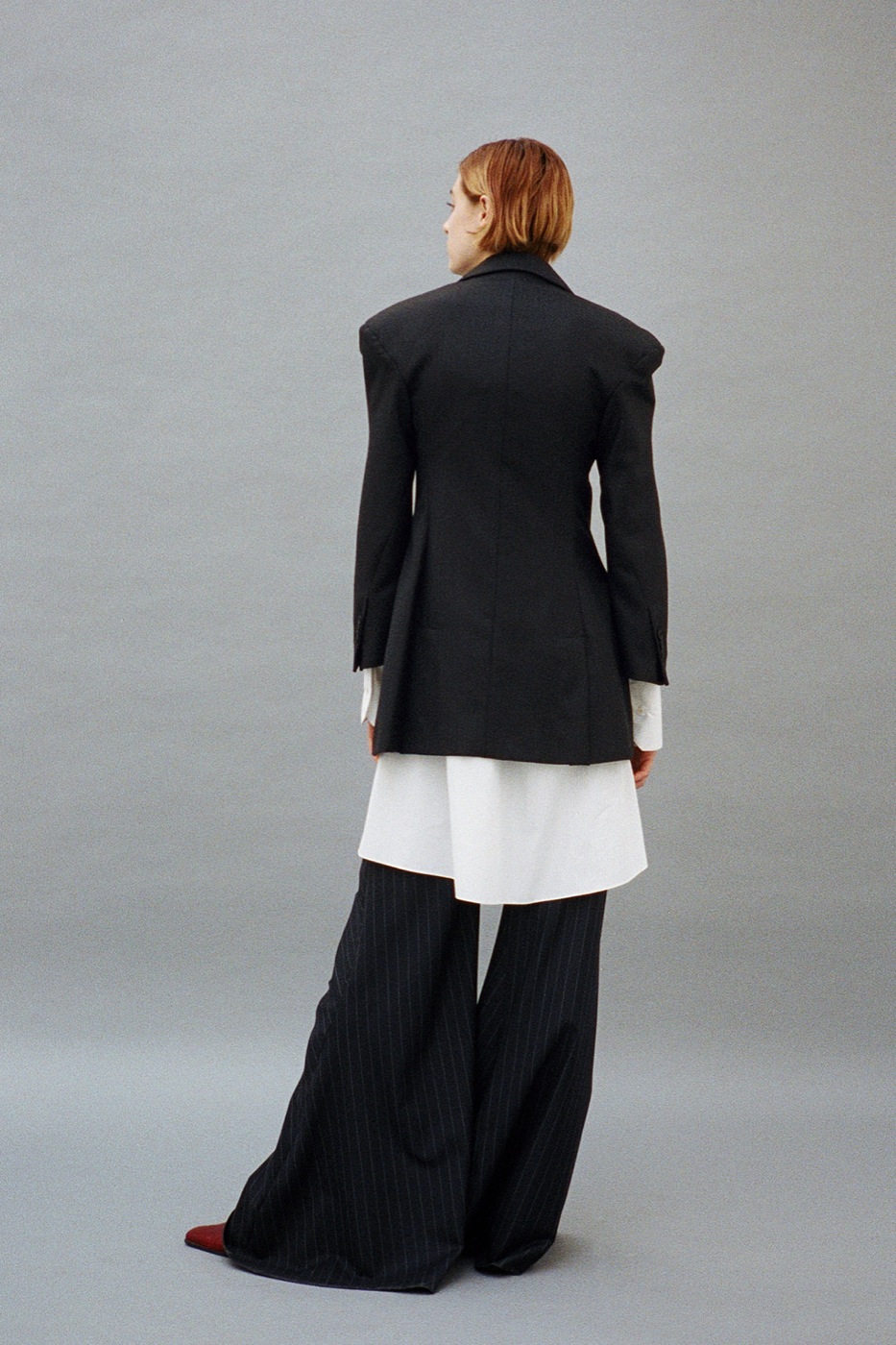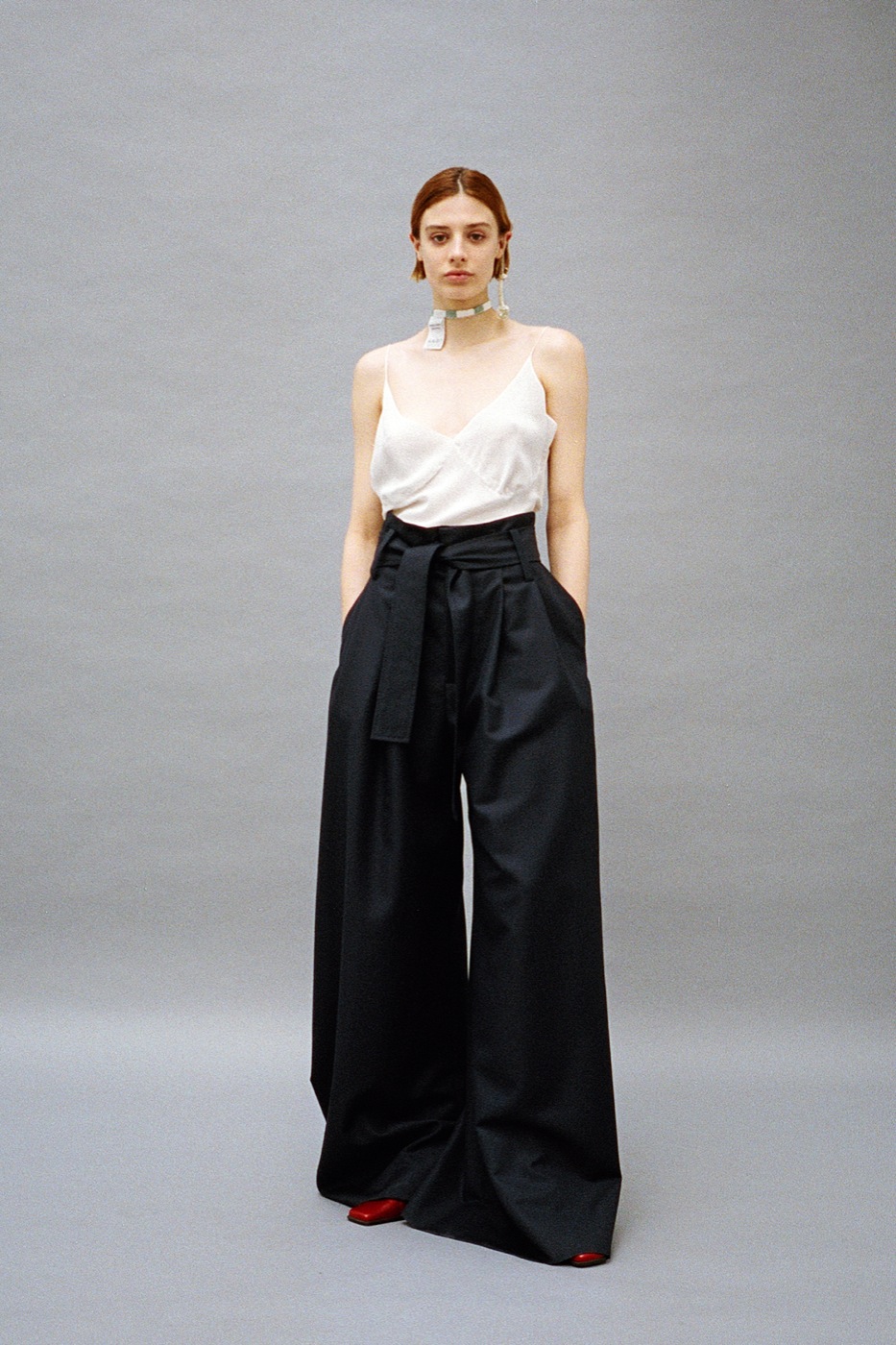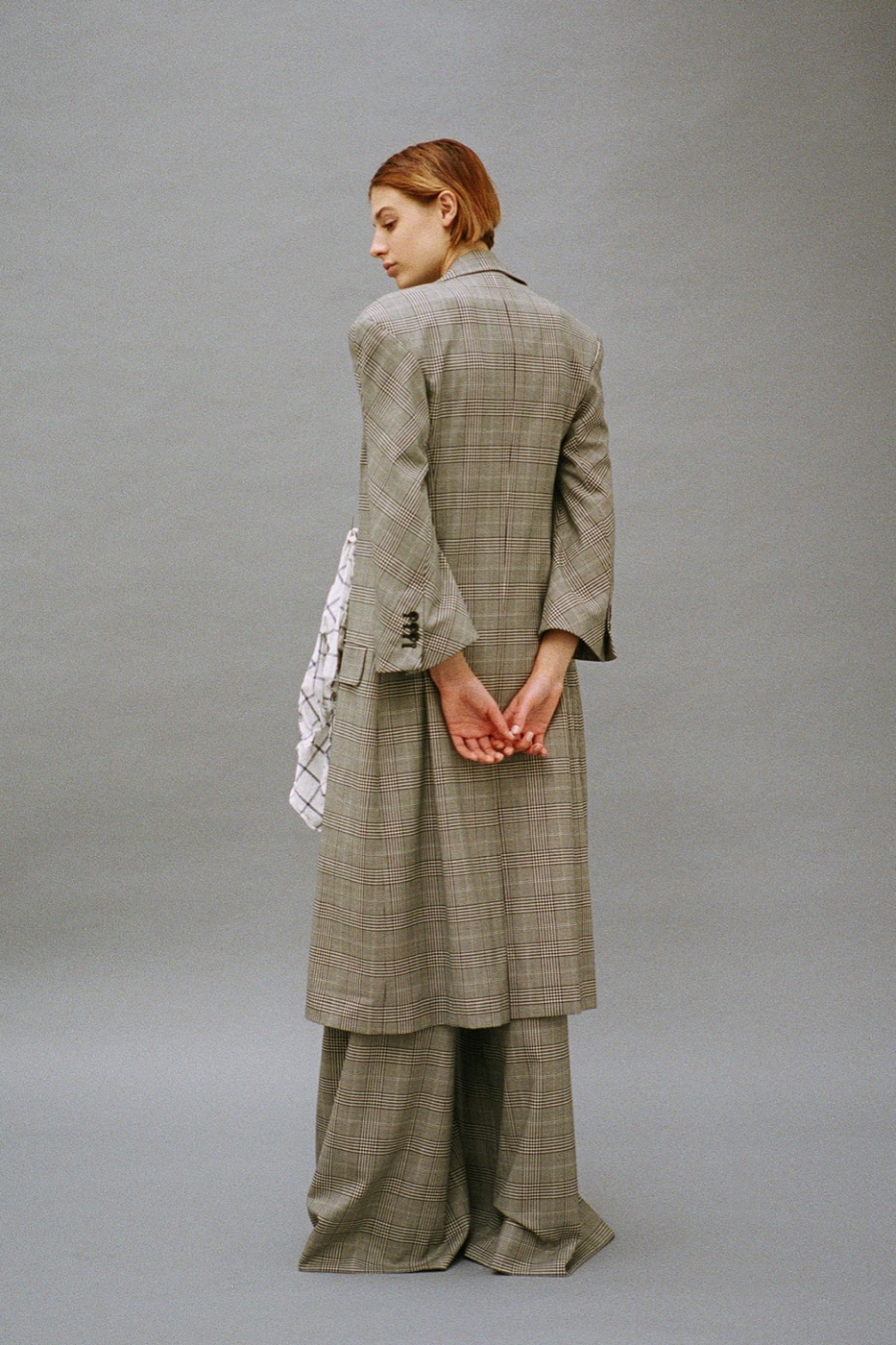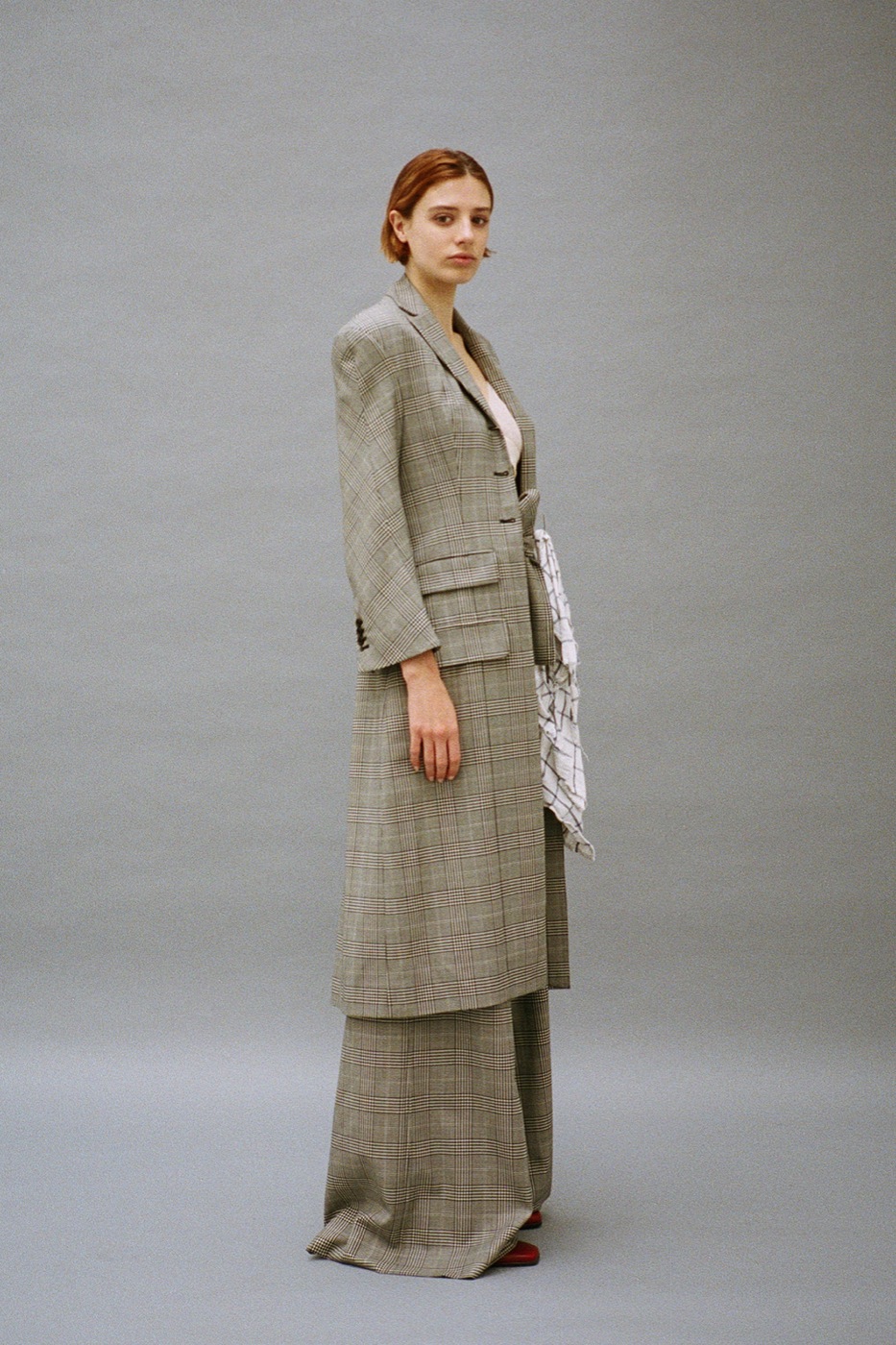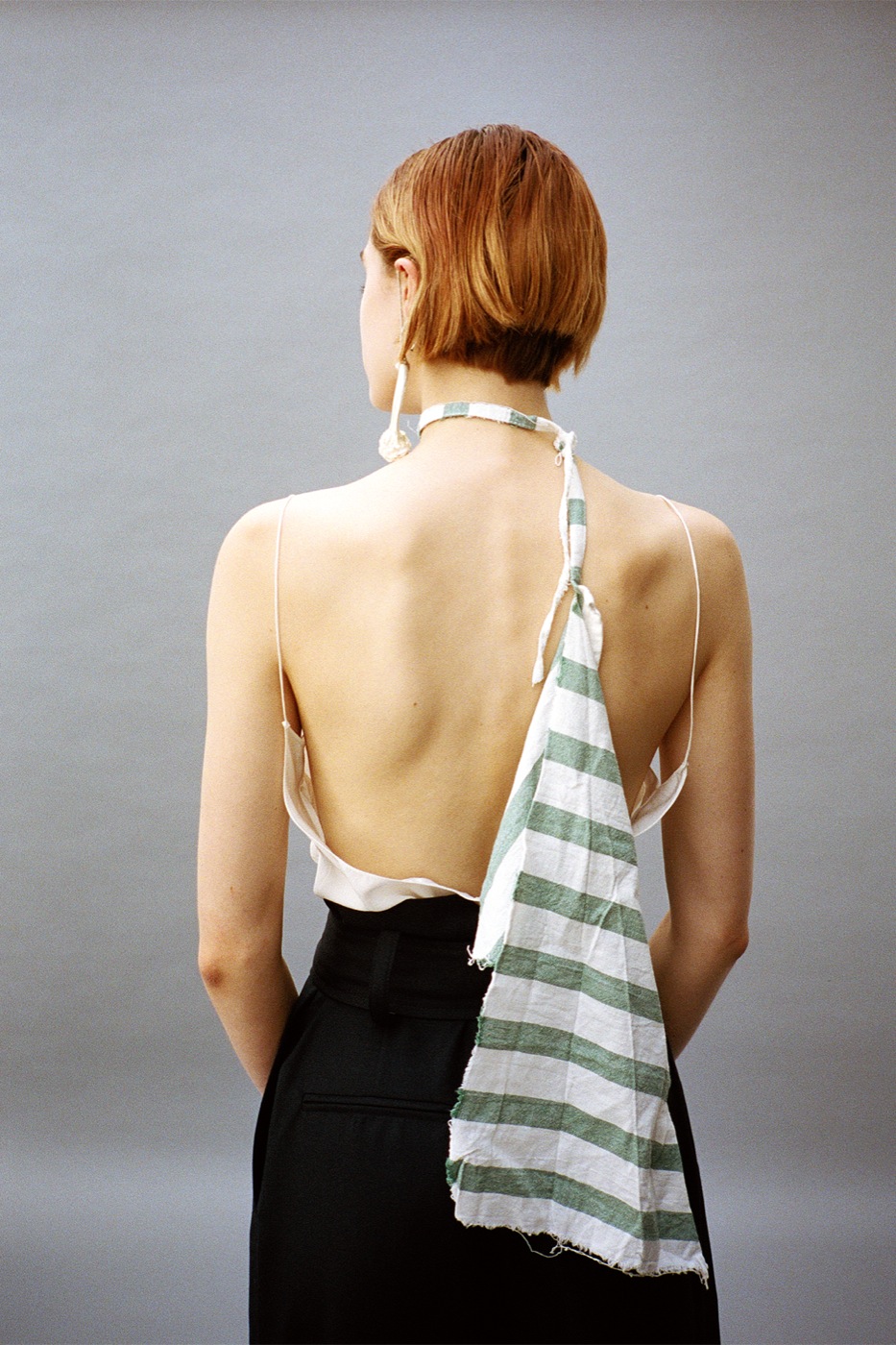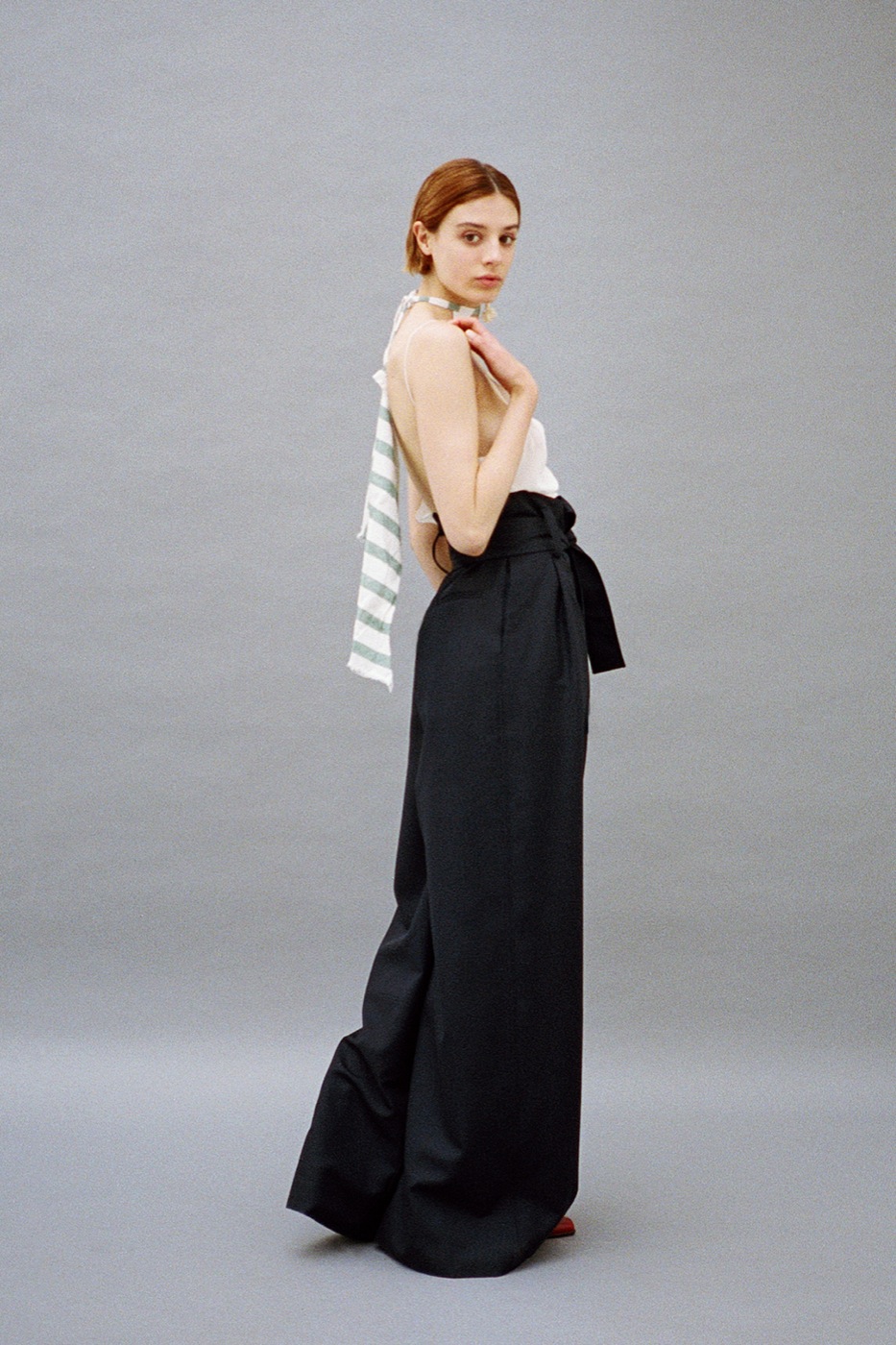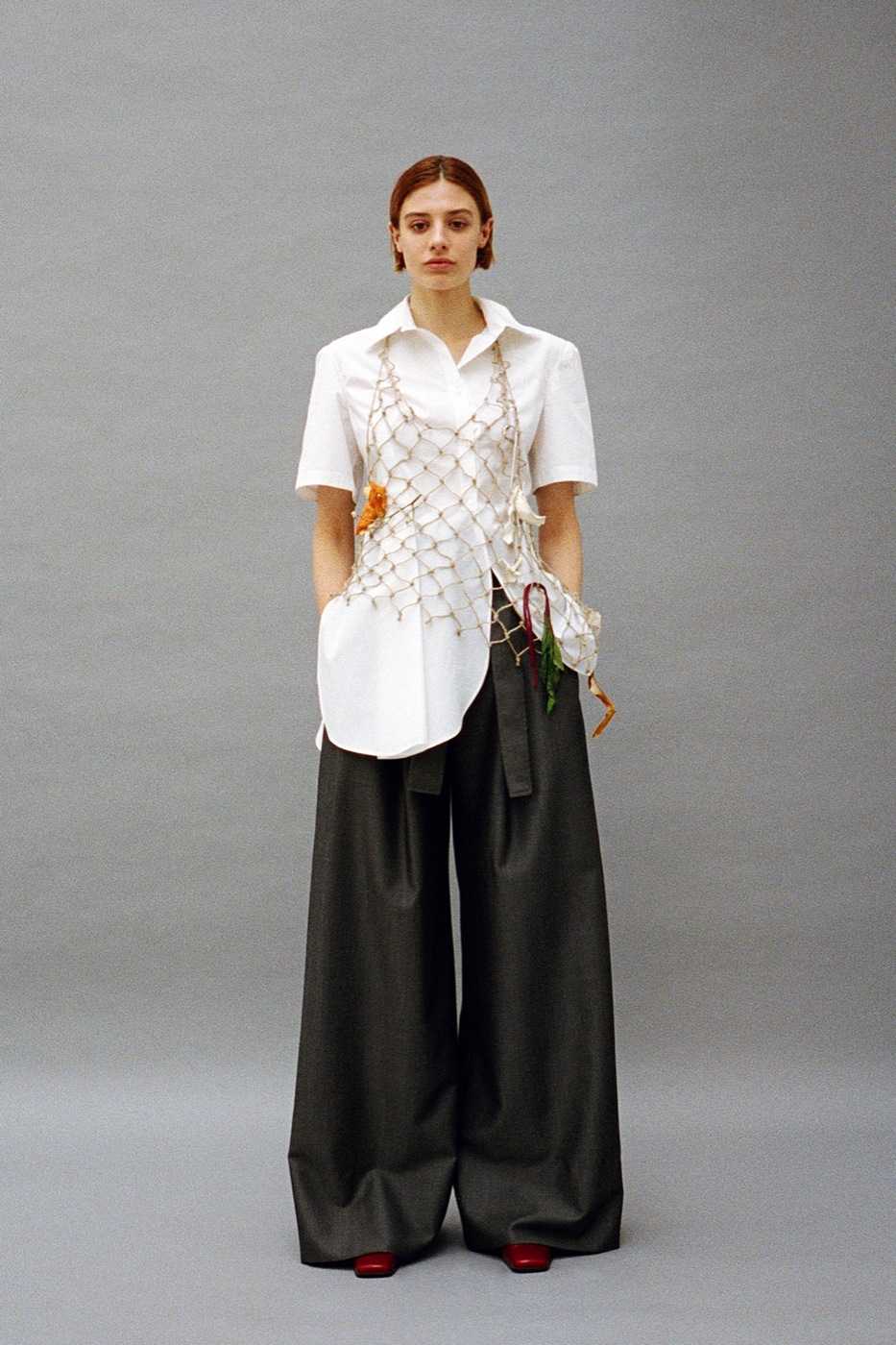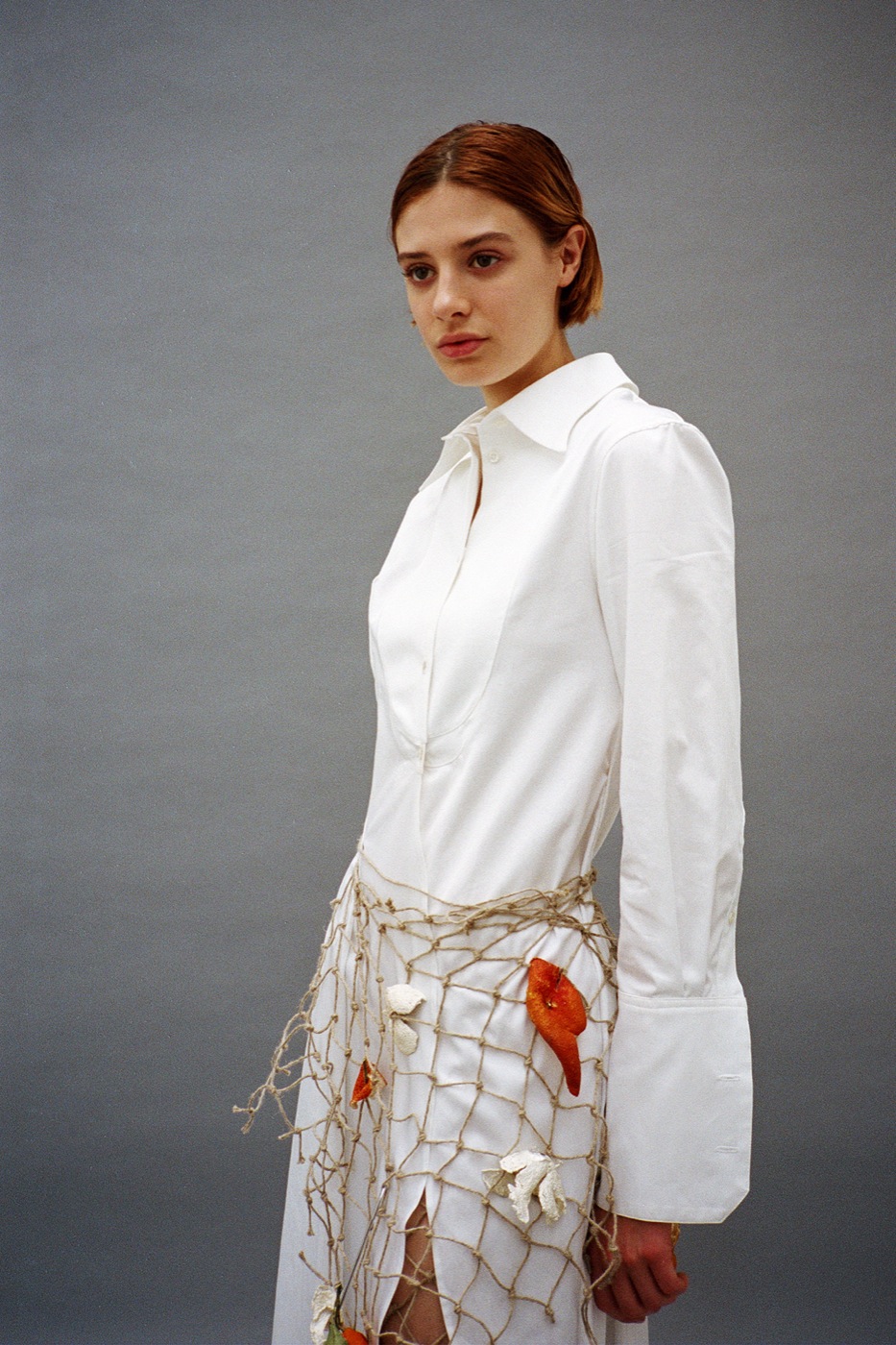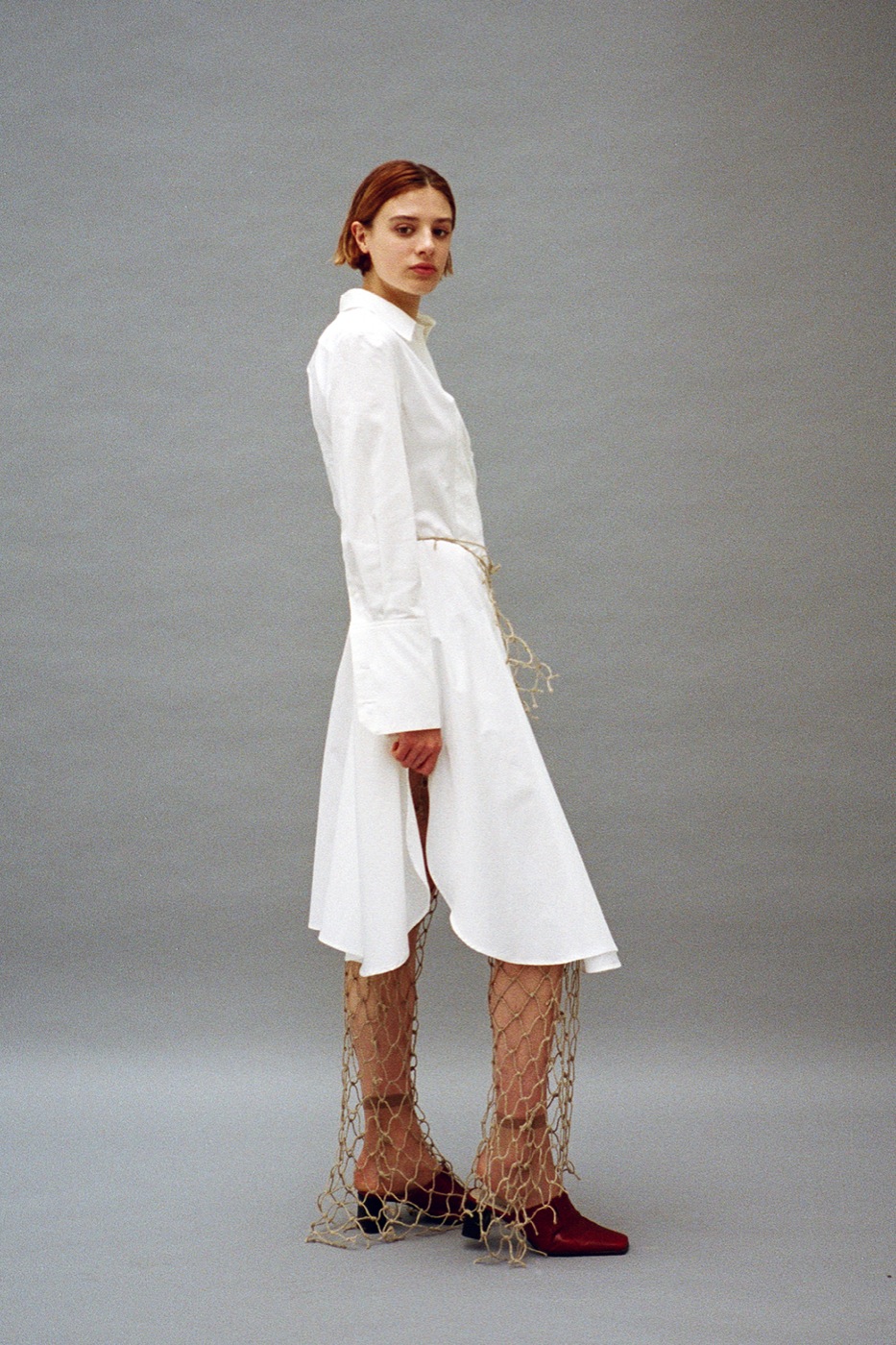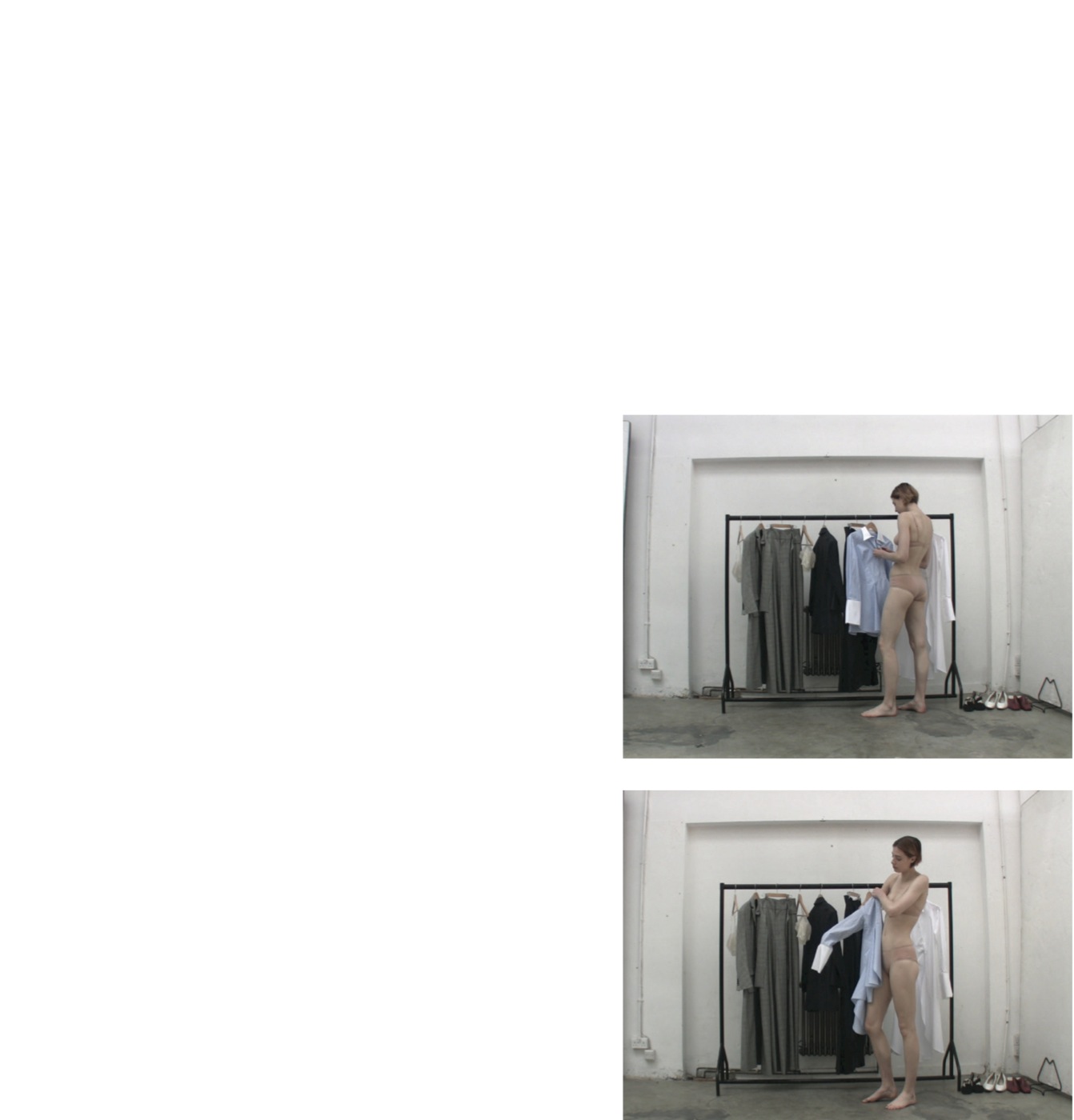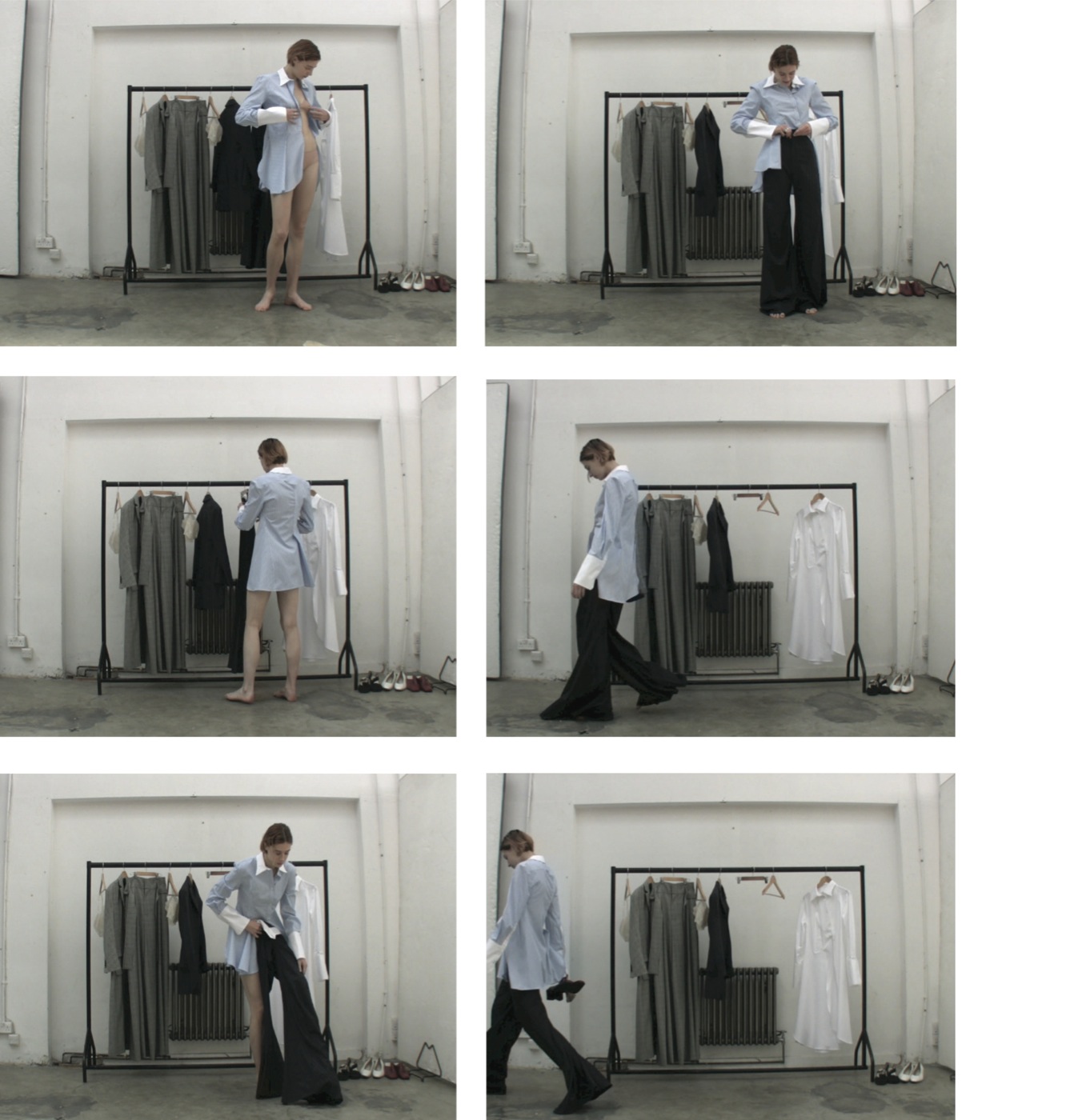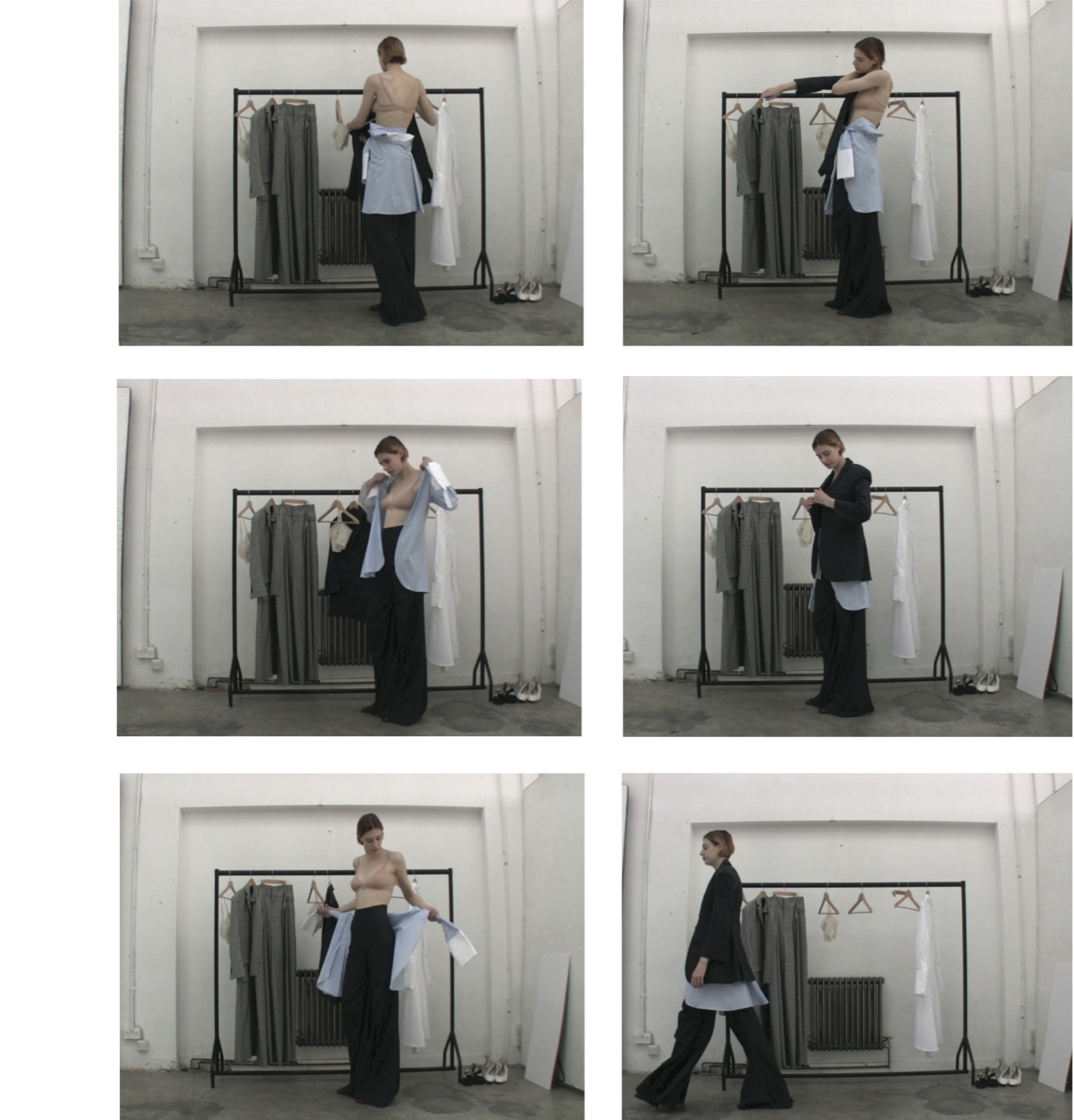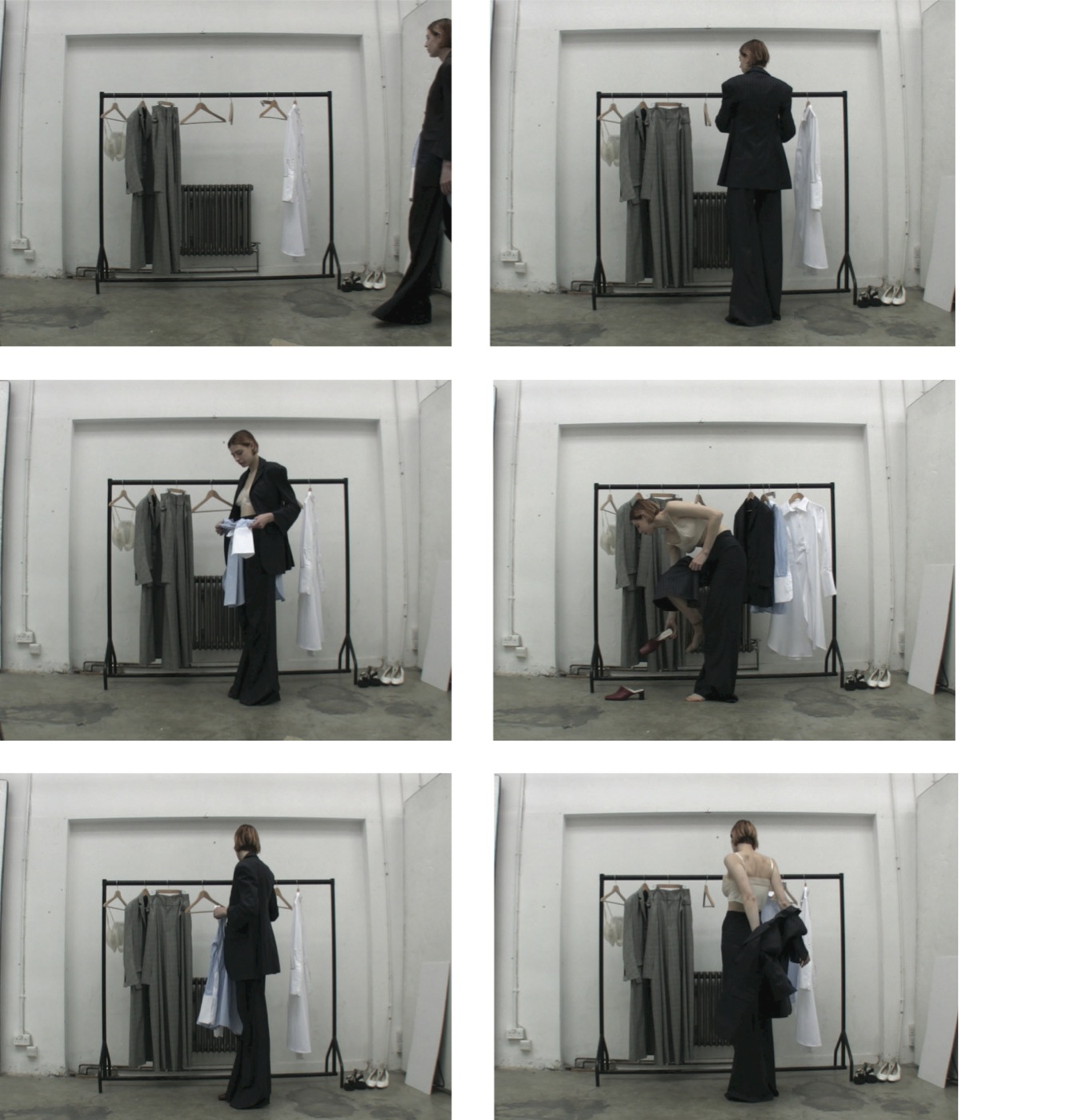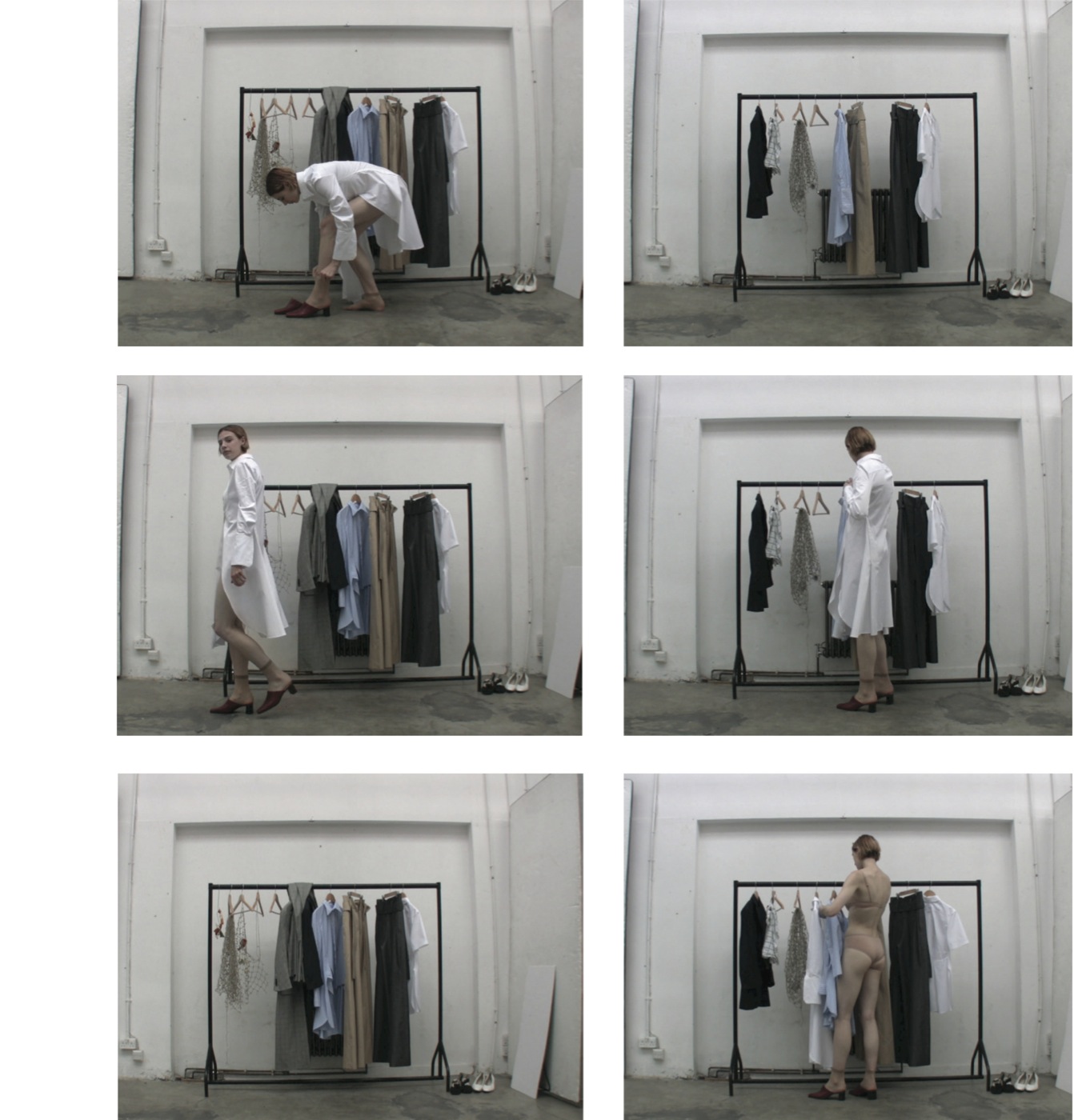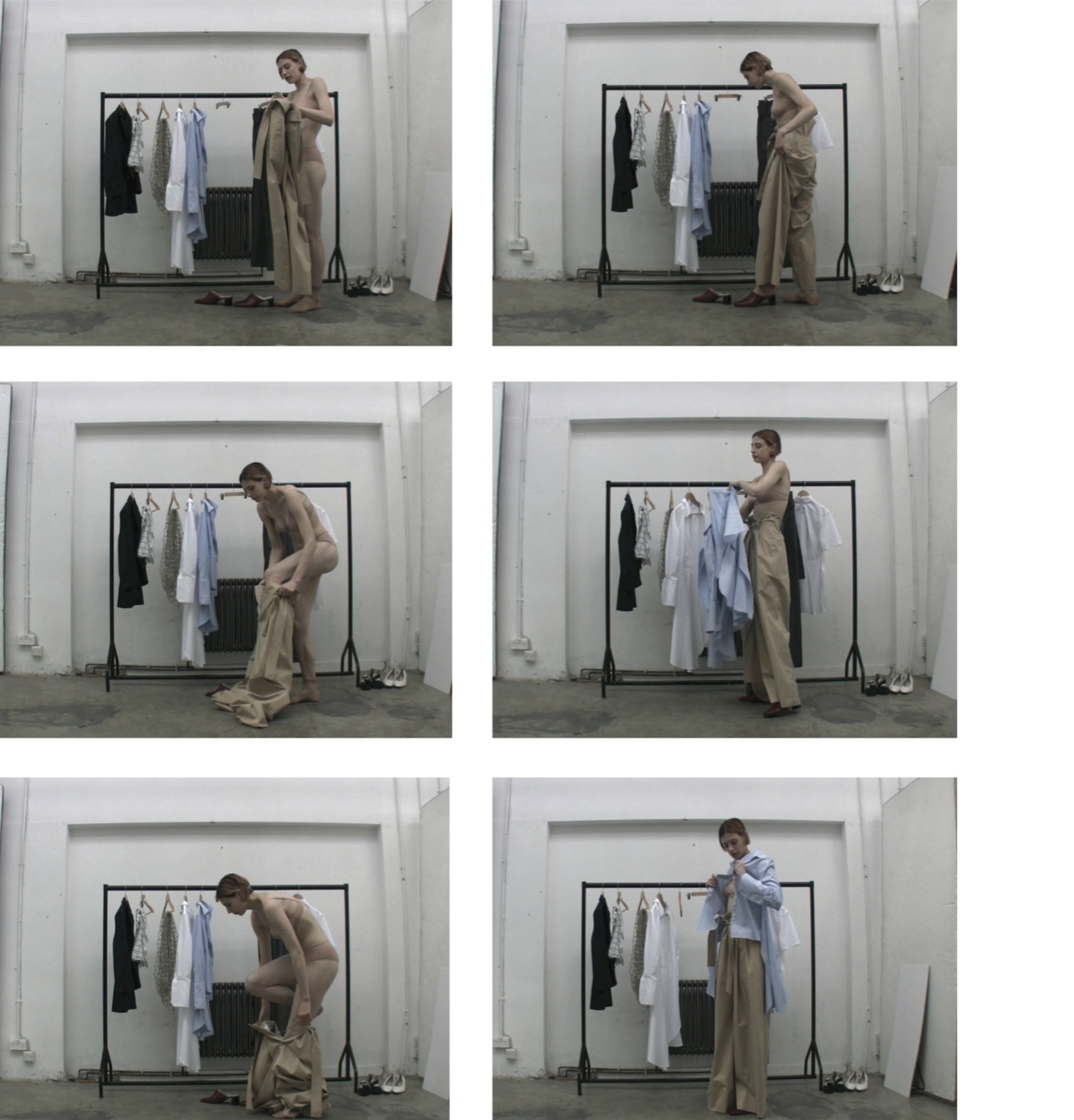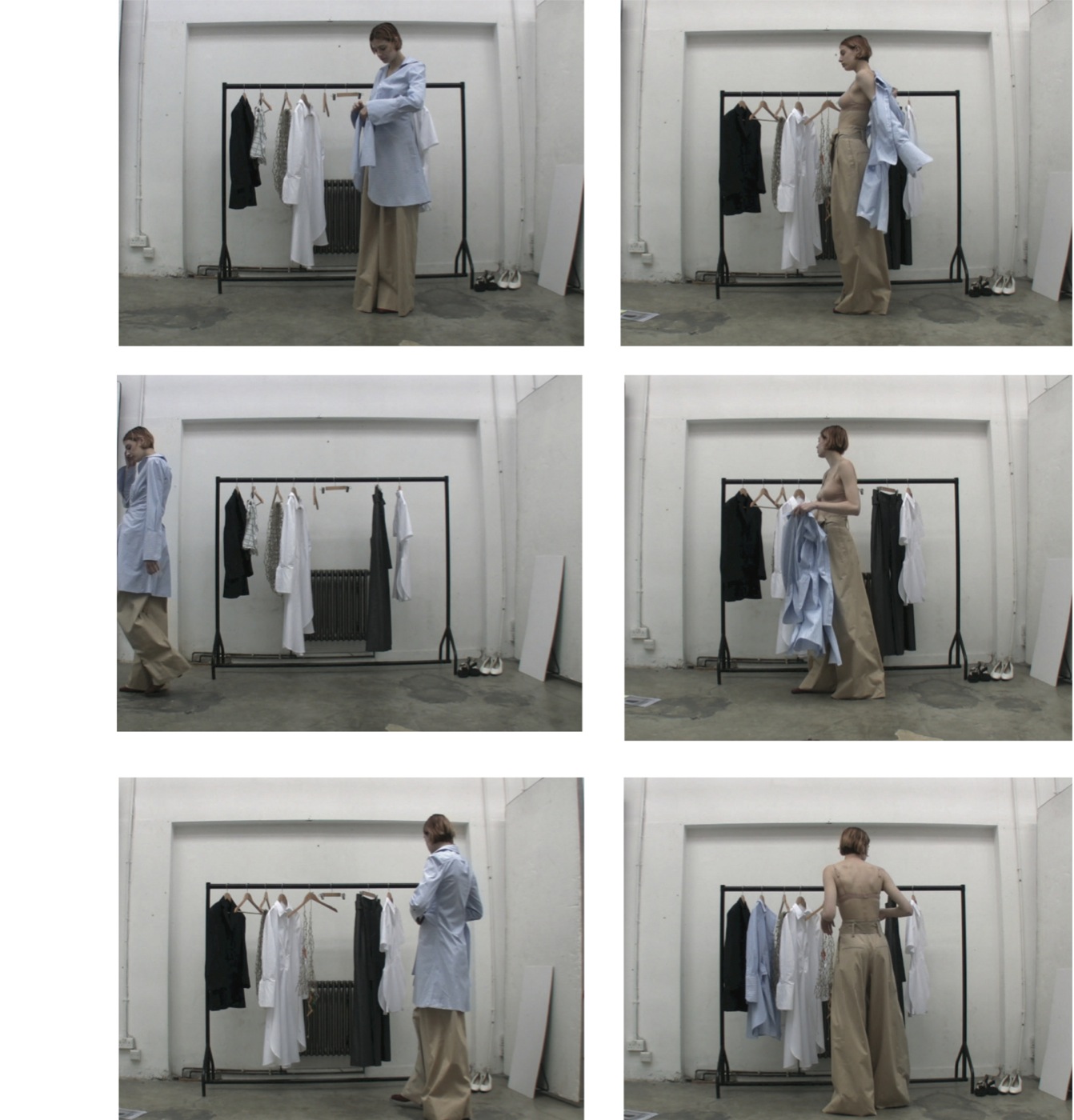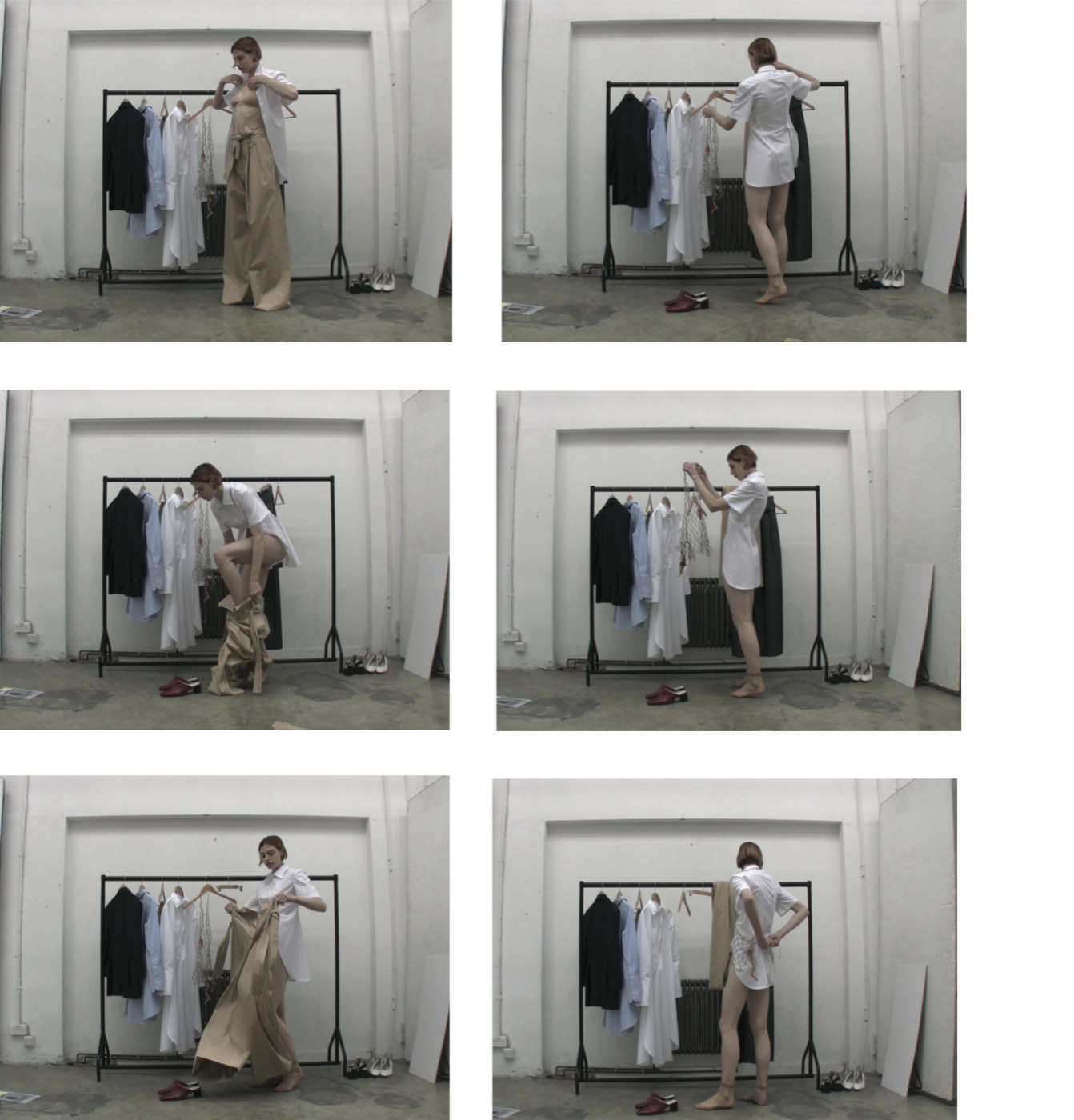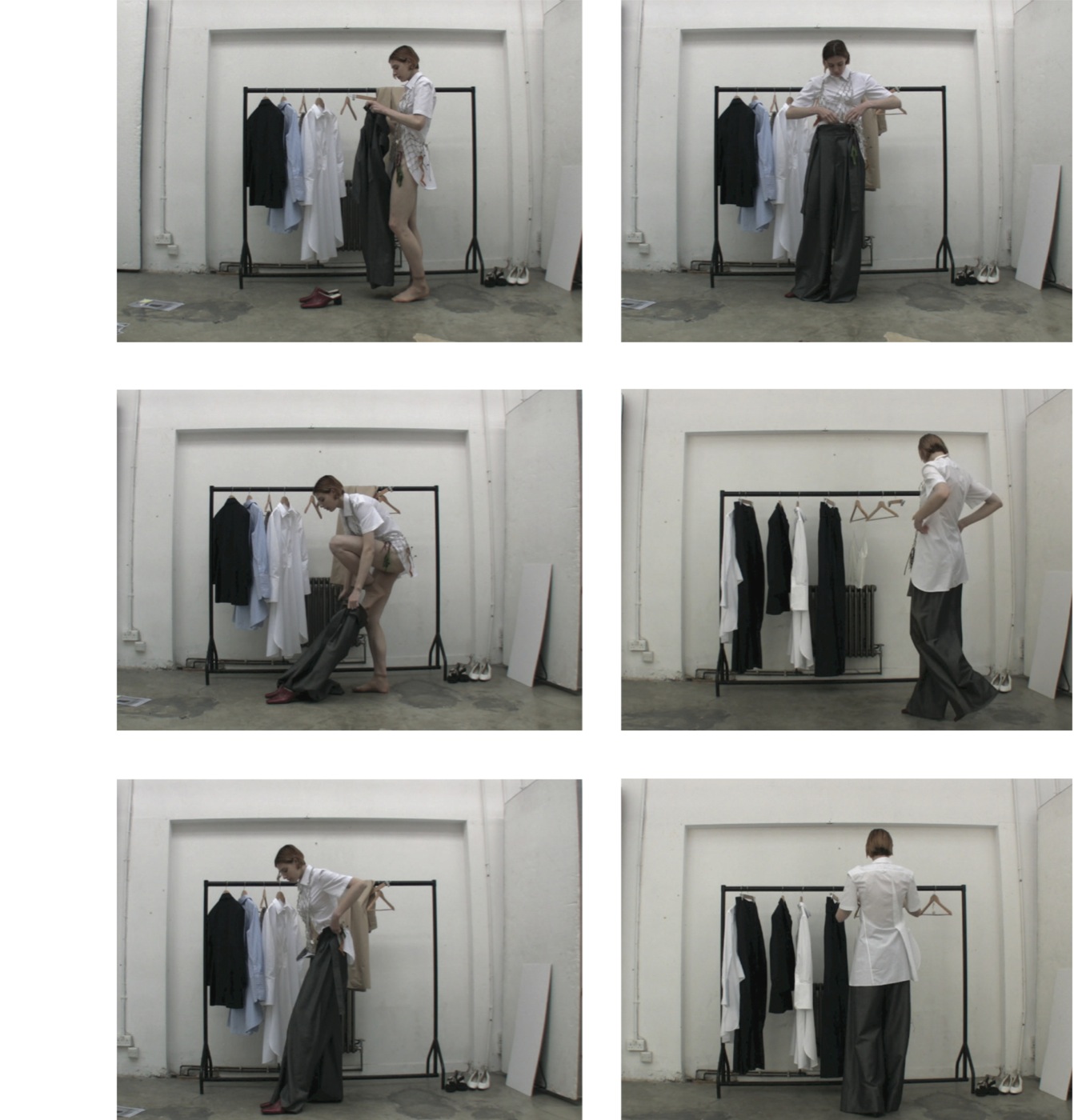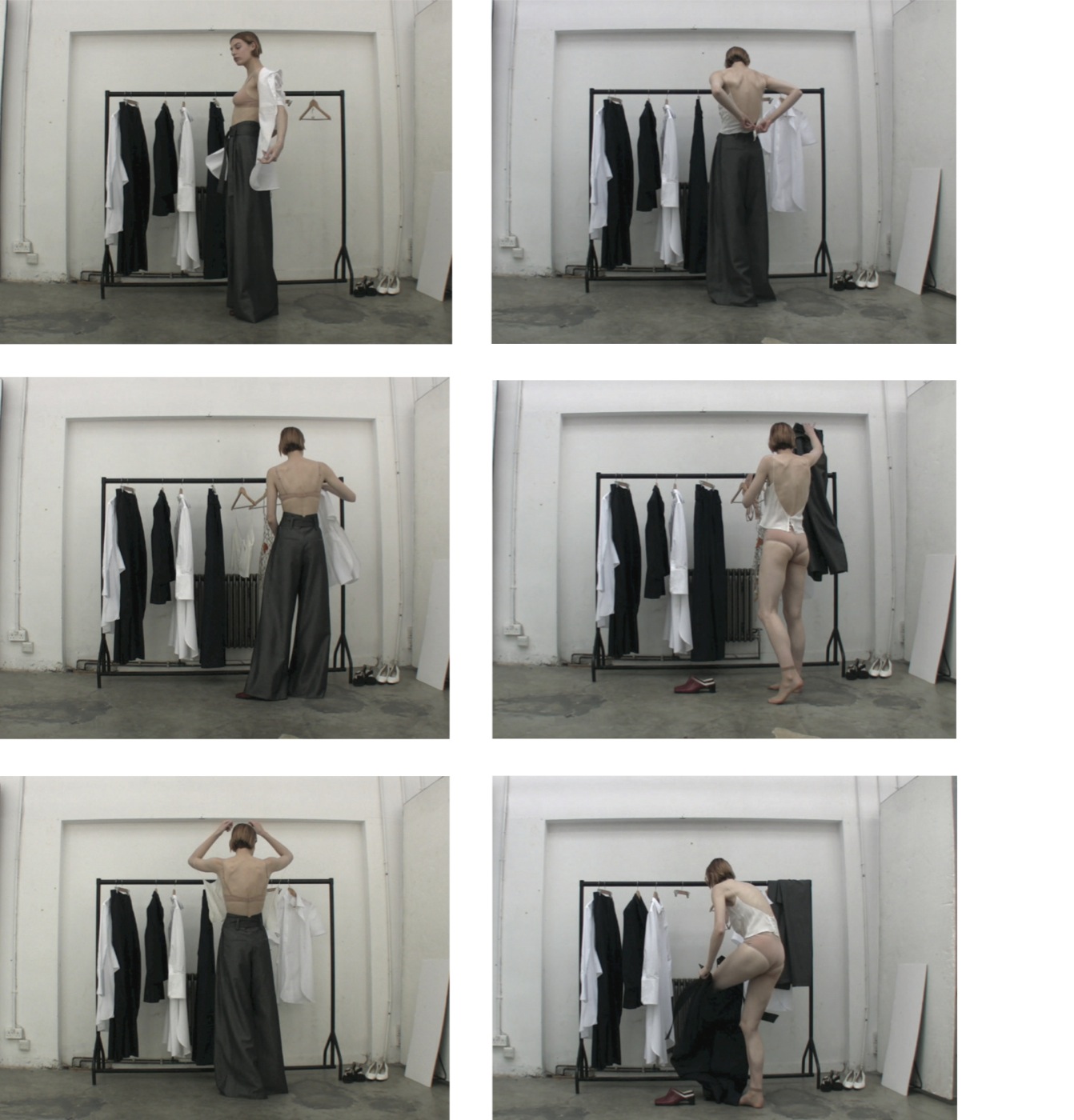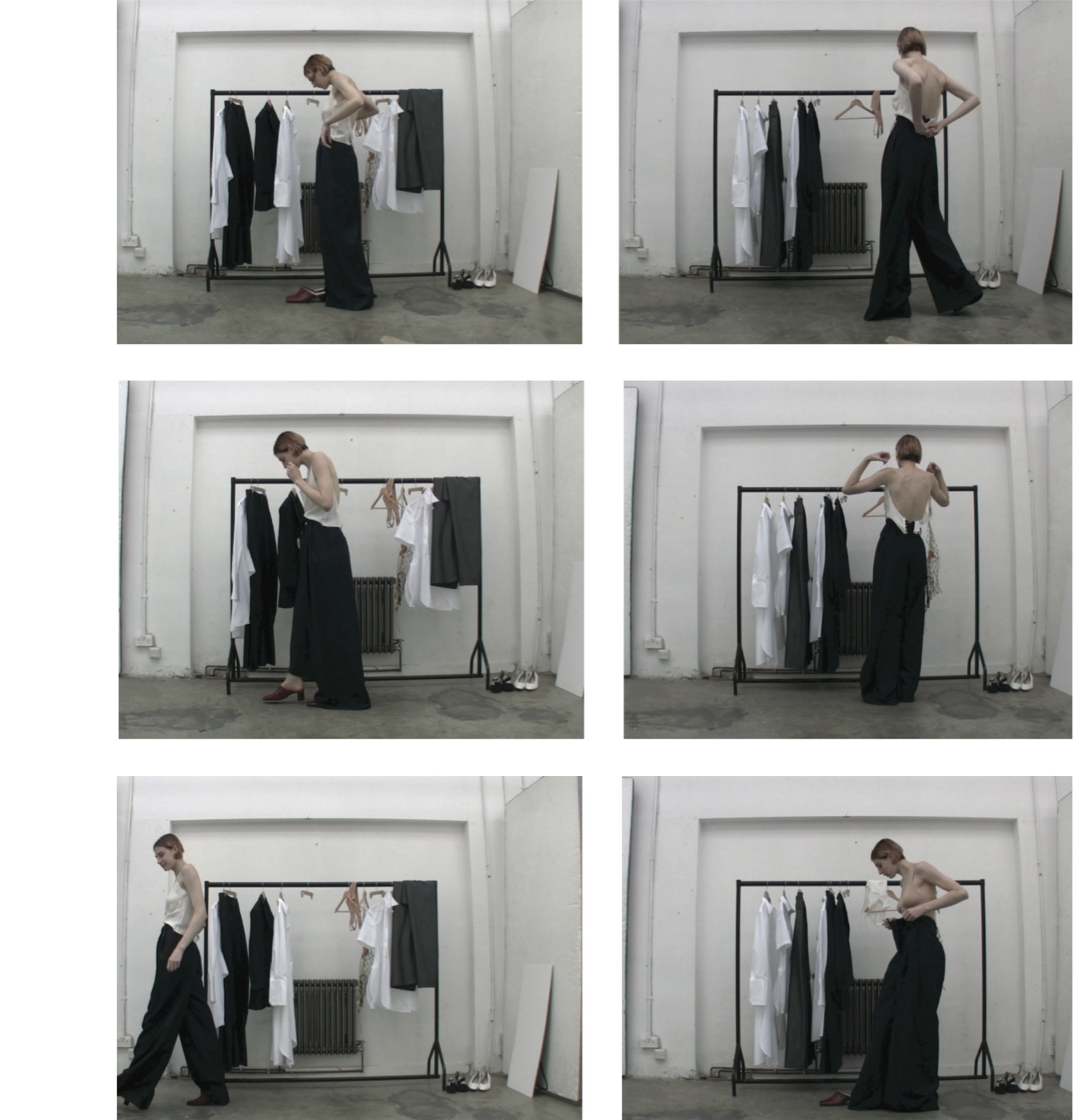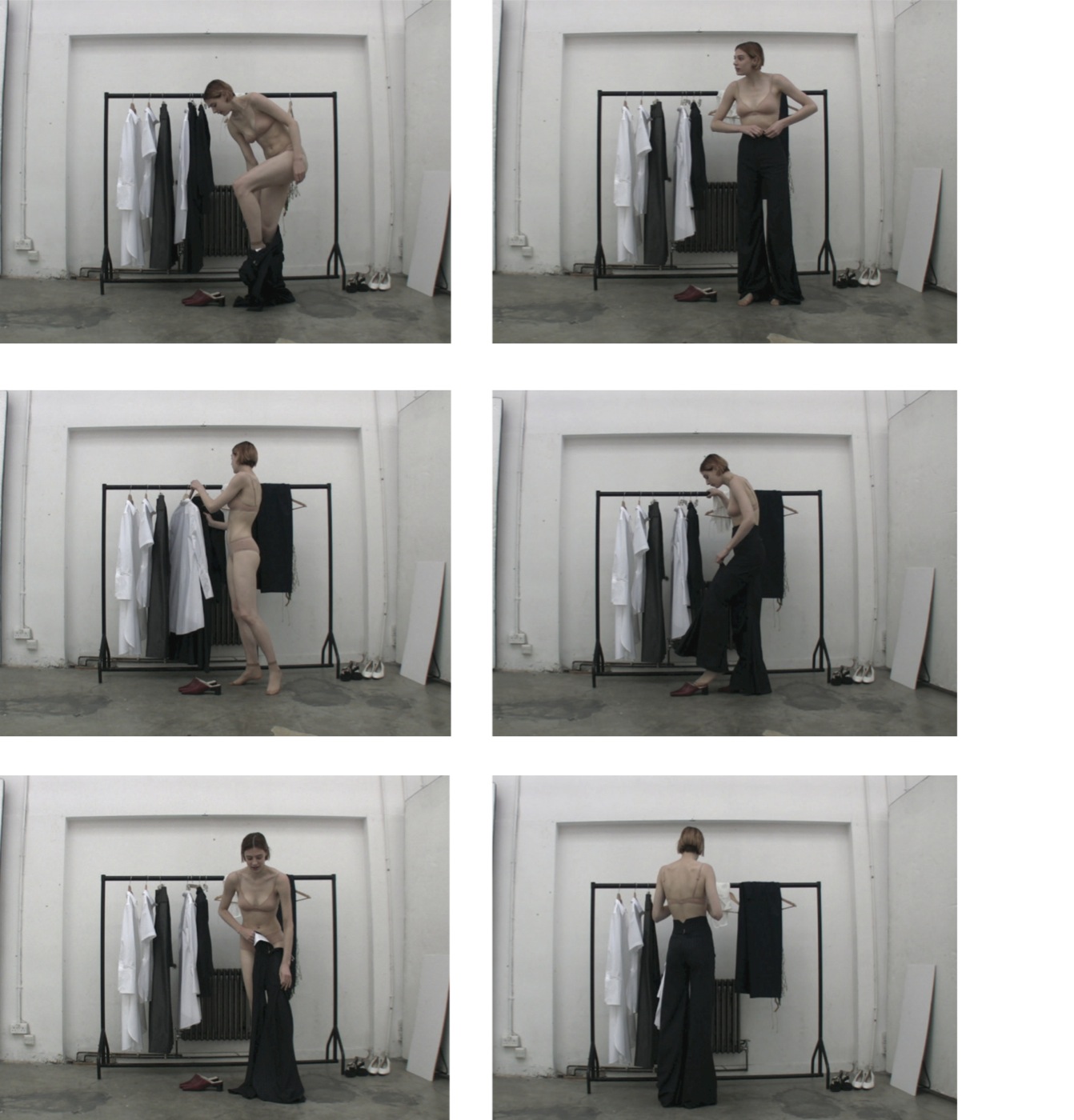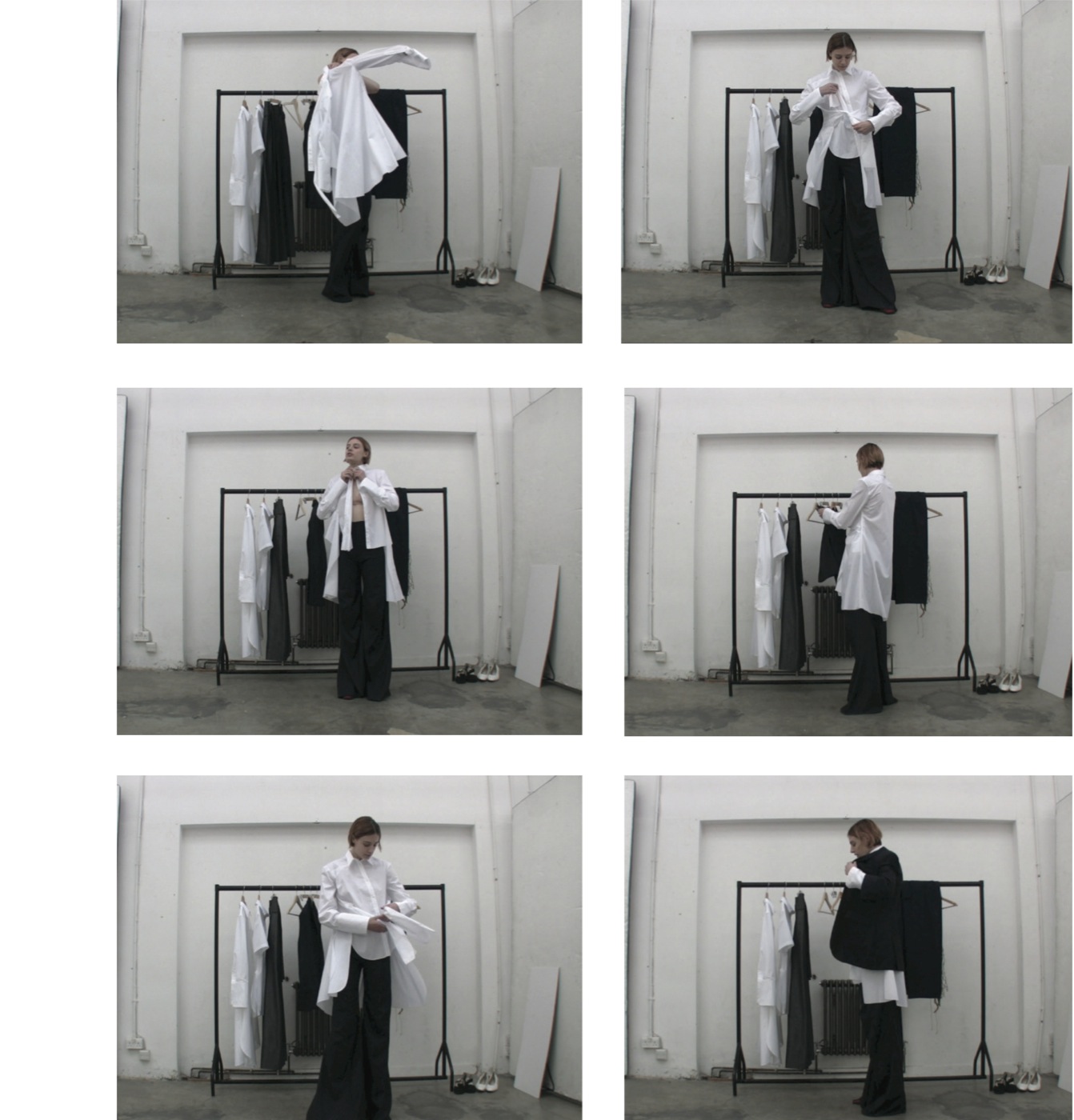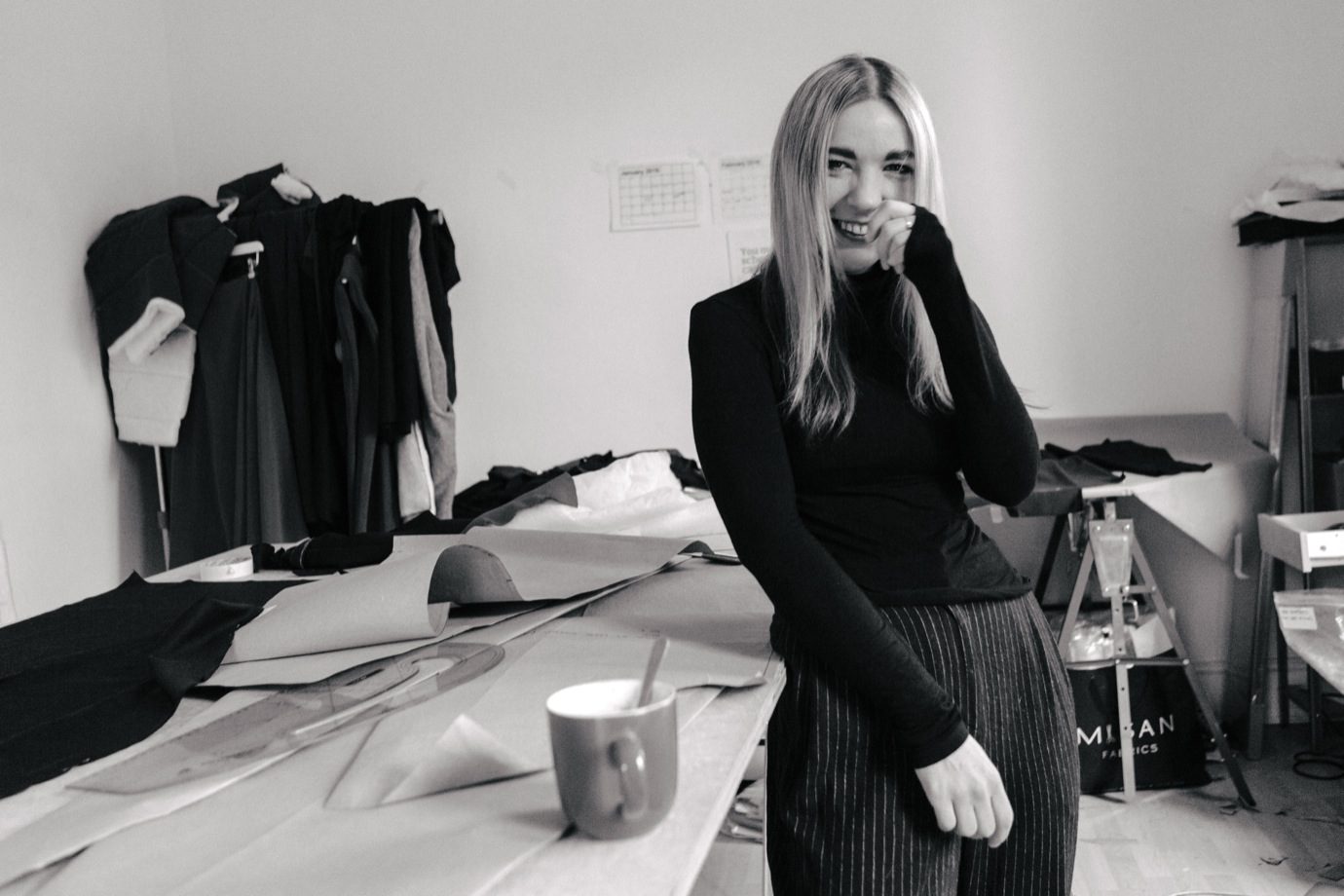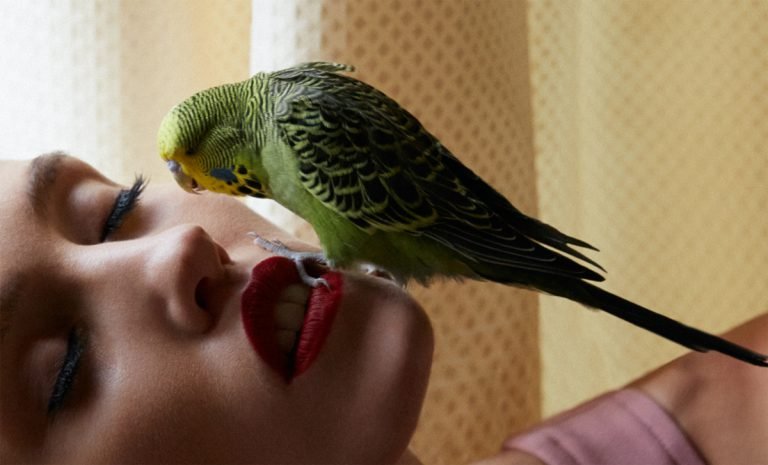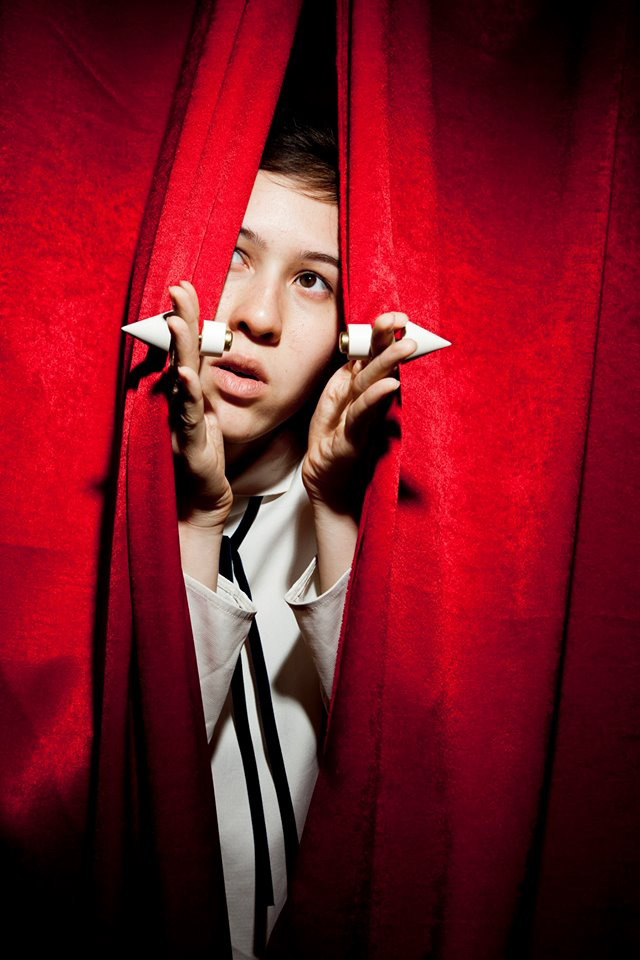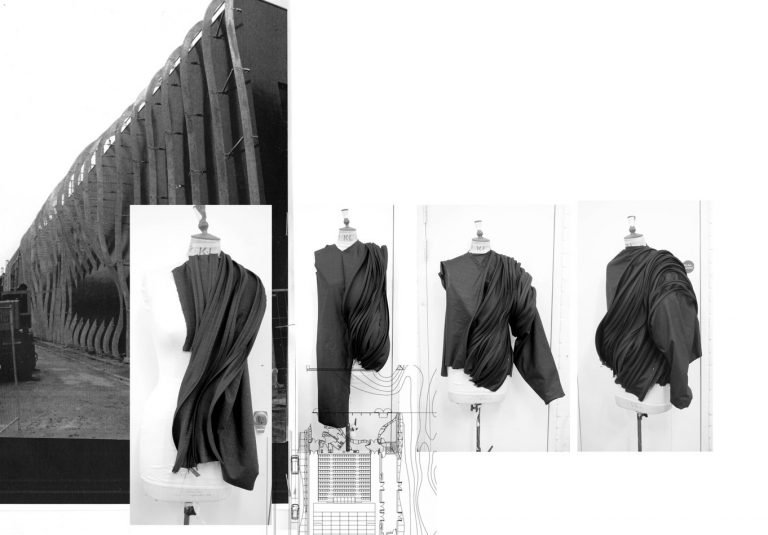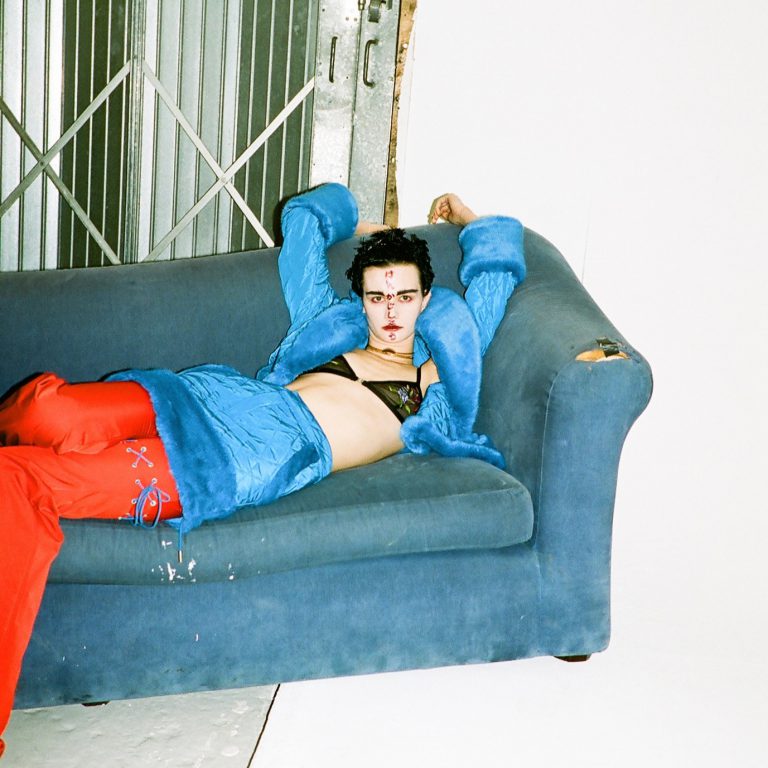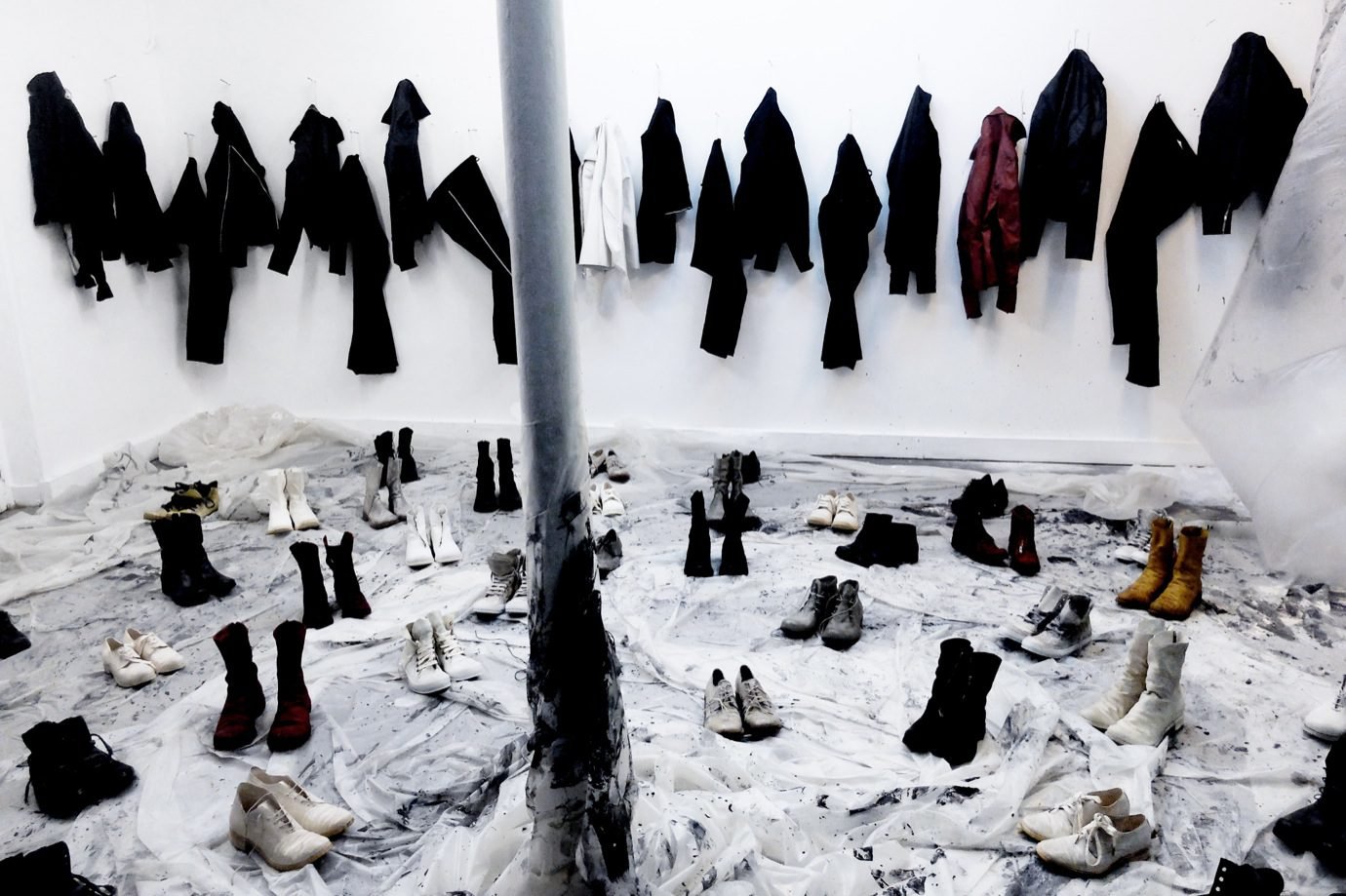“THE CONCEPT AND VISUAL NARRATIVE COME HAND IN HAND. THEY DEVELOP AND CHANGE SIMULTANEOUSLY.”
What was the conceptual starting point of your graduate collection?
Whilst I was on placement year, I felt very disillusioned about fashion and what relevance it really has to women now. Then I read the book ‘Women in Clothes’, which is partially a collective memoir, and partially a field study. It incorporates the views of hundreds of women of all nationalities, on how the garments we wear define and shape us, and in extension how the fashion industry affects women’s lives for both good and bad. This started my personal exploration into women’s wardrobes, looking particularly at patterns of repetition in what we wear, and how our domestic environment and working environment affects our clothes.
Is it a challenge to translate a very conceptual idea into something practical?
For me the concept and visual narrative come hand in hand. They develop and change simultaneously.
How did your collection develop during the course of the year?
My collection changed a lot after we did the pre-collection. Time management was a real challenge, I ended up needing more help making the final pieces than I originally thought.
Does every project inspire you?
No, I haven’t always been inspired by every project. Often it’s not because of the project, but the pace of the course and the industry. I’ve had times where I’ve felt burnt out and uninspired. At those moments I just try to keep on looking. I go to exhibitions, take walks, and read, and eventually I find something that inspires me again. Some of my best projects have started that way.

